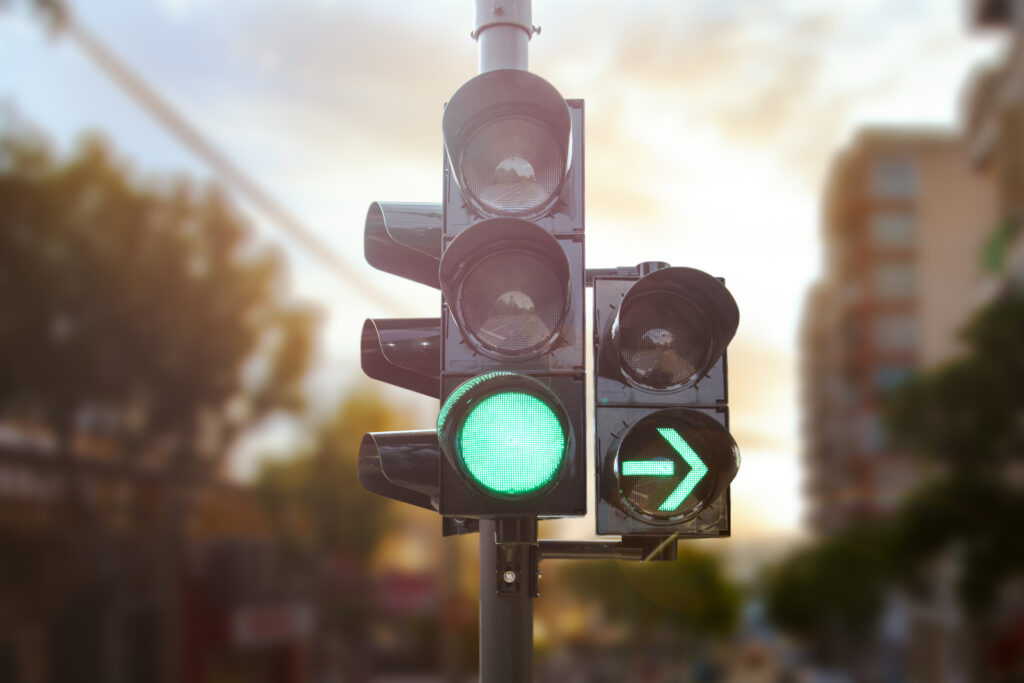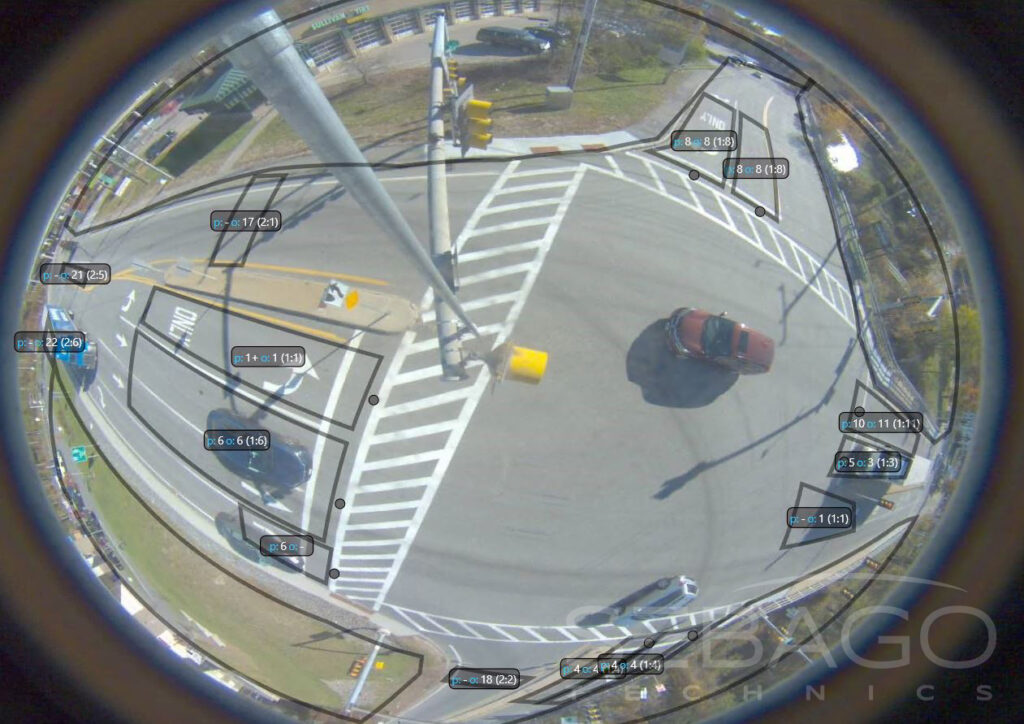We have all been there, late at night at a deserted intersection, not a car in sight, the traffic signal is red… and it isn’t changing. There is no reason to be stopped, there is no traffic to let through except you, but there you sit. The signal will turn when it is good and ready, and you don’t seem to be a factor in that decision at all. You just want to get home.

Or perhaps you come over the crest of a hill and see, stretching down the other side, a long line of cars all stopped by a light at the bottom. Your heart sinks momentarily until the light turns green and cars begin to go through. Your hopes rise! But they are dashed after a few cars proceed and the light turns yellow. The last car slips through long before you even get close. You watch, waiting for it to turn again and, alas, only a few more cars get through before it turns red again. You start counting the cars between you and the light and do the math. This is going to take a while!
As you sit and wait, you feel trapped in a system beyond your control, at the mercy of a mechanical box somewhere, unacknowledged, unknown, your time and needs unconsidered. You are stuck. And you think: If only there was some intelligence behind it all, someone who cared, who was paying attention, and could change things. There has got to be a better way. But the light turns green and we move on with our life leaving the intersection behind for someone else to deal with.
Fortunately, as it turns out, there are better ways, and we at Sebago Technics are hard at work finding them and putting them into practice across the State of Maine and regionally across New England.

The problem is not a new one, and while driving in Maine is nothing like driving in many cities of the world where there actually is little to no traffic engineering and where city centers routinely become parking lots, we should be grateful for the work that has been done. Generally, we only notice the concept of “traffic engineering” when it doesn’t work. There has been a lot of intelligence put into our systems, but the problems are not as easy to solve as we would like to think. Surely some smart person just comes up with an algorithm that takes into account traffic volumes by time of day, program the intersections and all should be well. Right?
That is actually how it used to be done. When a new signal was installed, an engineer would make an estimate of the usage of the intersection, program timings for each lane, press “go”, and walk off, leaving the program to run its rhythms regardless of the real traffic being experienced. And we feel the un-intelligence of this when we are the ones stuck at the red light in the middle of the night. The problem with this approach is that human life is complex beyond prediction and we don’t operate like machines. We are always in motion, making decisions, changing our minds, responding to the events of the day, week, year. Our rhythms are discernable but not set in stone; our needs for roads ebb and flow through the days, weeks, and years.
It is interesting to note a few examples of these dynamics, but remember these are just a few out of thousands that shape our traffic patterns. As many of us noticed during covid, the highways emptied out and the neighborhood roads busied up. Or think of the early summer, how the traffic through Ellsworth skyrockets as people head to Bar Harbor and then drops off again right after labor day (but sometimes not right after, mind you.) Or when schools have a snow day, different corridors open up for the commuters. You might have noticed recently that you have to give a friendly horn beep to the person in front of you still texting after the light has turned green? All of these changing factors are mixing, matching, and governing the number of cars that show up at a given time at an intersection.
So, what can we do with these challenges?
Rigid, one-time analysis can’t account for the real world and won’t solve today’s traffic challenges. What you almost want is a person standing at every single signal watching the flow, constantly adjusting the programming. Someone who knows when the waves are coming, who sees each person, each one that needs to get through to go about their life, and responds accordingly. Someone who can say, “I see you all, and I’m going to facilitate your needs as efficiently as I can.”
Happily, the technological advances over the past years have enabled us to take a big leap forward in this regard. Fortunately, new systems have recently come online that allow us to record data from each signal at a rate of once every 1/10th of a second. Not only that but they can be configured to feed back to a central location where we can update and adjust the signal programming in real-time to the needs of every particular intersection.
Moreover, we at Sebago Technics are now collecting all of that data and expanding beyond “traditional” traffic engineering by introducing data analysts into our engineering team to help us respond to the information we’re compiling. So, what used to be an inherently “brainless” system set to run on its own, now has a team of people with a wide breadth of experience, listening and looking at the problems and intentionally shaping solutions to them. We are designing systems that, although run by algorithms and programs, have a team of people standing behind the system, adjusting it accordingly. Just think of the movie The Italian Job where all the lights change to snarl up the traffic so the police are all stuck in gridlock and the heroic thieves sail through with all green lights. The reverse scenario is what we are aiming for, heist excluded.
But this is exactly what all of us cry out for as we sit watching the light go green to red to green to red several times before we get through. “Please let there be some intelligence behind this box with lights that are shaping my life!” And that is what is at the heart of good engineering, people bringing their creative intelligence to bear on the challenges that we as a society need to solve. There is a lot of talk about artificial intelligence these days which can make the world seem cold, mechanical, inhuman, and out of our control. But at its best, what it means is that we take our own intelligence and embed it in the world around us so that we can go about our lives more efficiently and spend time on the things that matter more to us than sitting at a stoplight for no good reason. The problems we choose to solve, the solutions we find, and the way we find them give shape to our lives and the world around us.
Traffic Engineering
Good traffic engineering should make every moment of a journey make sense. Our process should be rooted in responsiveness to the changing times. Then, it should melt into the background. The benefits of this are plain to see. The savings in our quality of life are huge and obvious but think also of the time spent running our engines, the number of lanes of pavement we need, the hours of life spent in traffic. Much can improve through thoughtful, creative, traffic engineering. These gains only come from a creative collective of engineers from different fields who have worked through many challenges together and know how to collaborate and bring the best out of each other.
At Sebago, we love coming together around the challenges in our lives and communities, not just because they satisfy our intellectual appetite (we are engineers after all) but also because they solve deeply human needs and improve the quality of life for us all.
Now the next question is: What happens when we start embedding our intelligence in the actual driving of the cars themselves and we take our hands off the wheel?
Well… stay tuned, Sebago Technics is working on it, (for real!)

